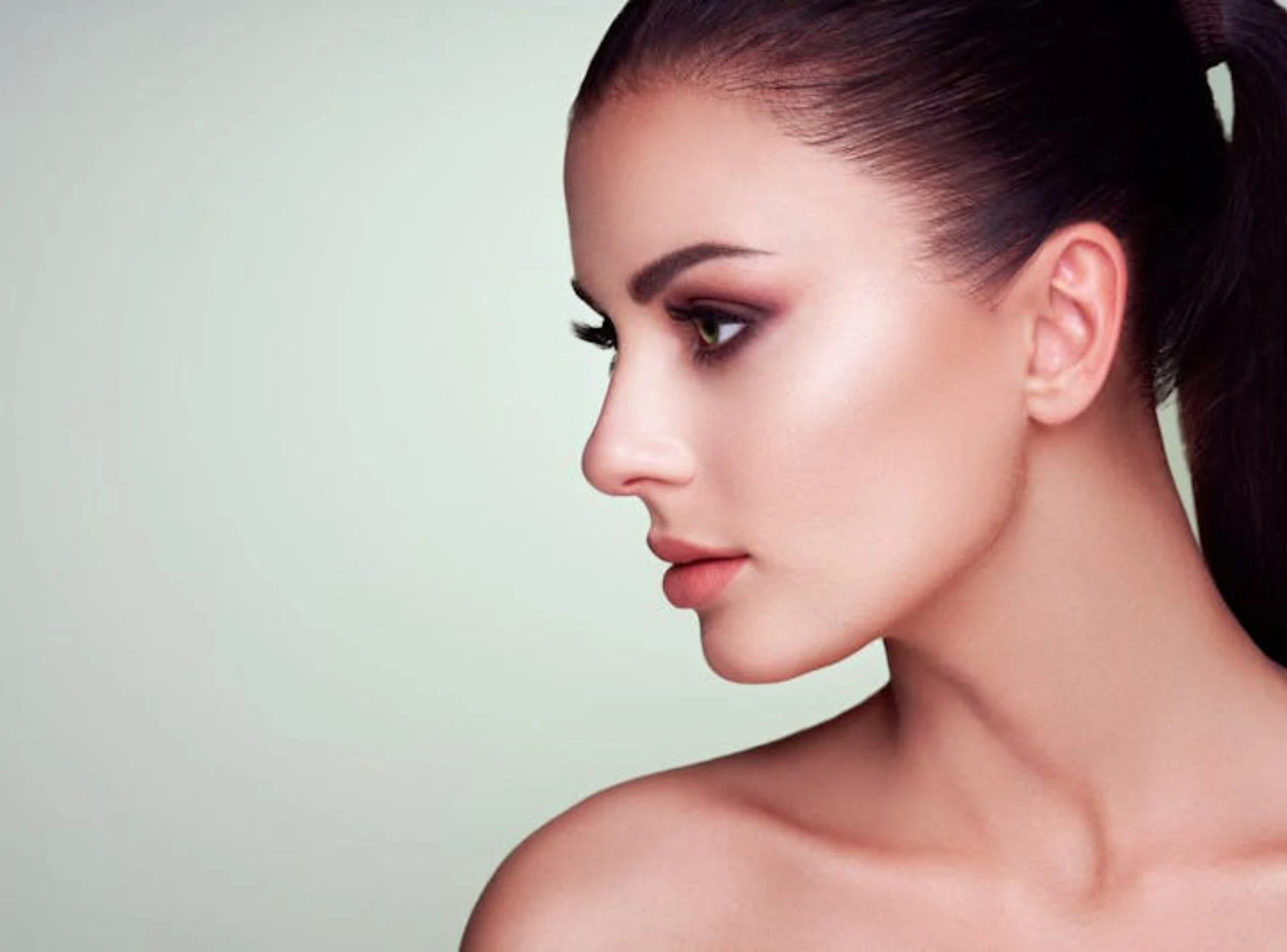Corrective rhinoplasty poses several unique challenges. First and foremost, the baseline of the nose has already been altered by previous nose surgery, making it technically more demanding and resulting in a longer recovery time.
Rhinoplasty is one of the most difficult facial surgeries, and medical literature in plastic surgery suggests that the revision rate could be as high as 16%. As a result, a prudent patient should thoroughly investigate their surgeon’s qualifications, such as training, experience, and board certifications.
Because of the complexities of primary nose surgery, most doctors treat it as a reconstructive procedure. The goal is to improve nasal aesthetics while preserving normal breathing functions and producing results that are consistent with his goals and personal preferences.
Even with the surgeon’s greatest efforts, unexpected healing or changes in facial proportions occasionally necessitate corrective rhinoplasty. Due to the natural aging of their nose, a small subset of patients may require a second surgery.
While there is no hard limit to how many times a patient can have rhinoplasty, it is important to note that each subsequent surgery can result in more scar tissue, which has a significant impact on healing and cosmetic outcomes. As a result, a great surgeon understands how to avoid or reduce additional scarring.
A large number of patients seeking major corrective rhinoplasty have both functional and aesthetic concerns, which are typically addressed by building a strong underlying nose structure. Grafts or “living tissue,” harvested from other areas of the body, such as the septum or wall between the nostrils, bowl of the ear, and rib, can be used to create a stable framework.
Septum grafts are thought to be the best material for creating a stable nasal structure and treating a variety of cosmetic and functional issues. However, some patients have theirs completely depleted during primary nose surgery, so other donor sites are considered.
Every effort must be made to avoid having another surgery. Thus, solid rapport and open communication between surgeon and patient are critical.
Board-certified plastic surgeons who regularly perform revision rhinoplasties are best suited to carry out these complex procedures. They understand that a thorough examination of the nose and a review of previous surgical techniques are essential steps toward achieving satisfactory results.
Revision Rhinoplasty In Dubai
Rhinoplasty is a surgical procedure used to reshape or correct the nose to improve its appearance or function. Corrective rhinoplasty is also known as revision rhinoplasty. Revision Rhinoplasty in Dubai is performed when a patient is dissatisfied with the results of their first surgery or has breathing problems. It is frequently more difficult than primary rhinoplasty, necessitating advanced skill and meticulous planning for the best results.
BOOK AN APPOINTMENT TODAY
What Is Corrective Rhinoplasty?
Corrective Rhinoplasty ia also known as Revision Rhinoplasty is any surgery on the nose that is done to fix or improve the results of a previous rhinoplasty. This could be a second, third, fourth, or more rhinoplasty.
Rhinoplasty is a very detailed and personalized surgery, and each patient heals in their own way. Many people are pleased with their results, but some may find that their nose doesn’t look or work the way they thought it would after the first surgery. In these situations, revision rhinoplasty might be a good idea to change the shape, make breathing better, or fix problems with the way the nose healed.
Revision rhinoplasty may be done to help people who didn’t get the results they wanted from their first rhinoplasty or rhinoplasties look better or get their balance and function back.
The Corrective Rhinoplasty Process Explained
Because structural changes have already been made to the nose, revision rhinoplasty needs a more individualized approach than primary rhinoplasty.
What to look forward to:
- Consultation and evaluation: Your surgeon will talk to you about your worries, look at the structure of your nose, and decide if revision is the best option.
- Surgical Planning and Grafting Consideration : To restore support and shape, many revision cases need cartilage grafts from the septum, the ear, the patient’s rib, or donor rib cartilage. The way the surgery is done will also be affected by scar tissue and how the body heals itself.
- The Procedure: Revision rhinoplasty is usually done under general anesthesia. It may be a short procedure if the changes that are wanted are easy to make, but it usually involves rebuilding the nose’s support, refining its shape, and making it work better. If the surgery is complicated, it could take three to five hours or more.
- Recovery and Healing: It may take longer to heal after a revision rhinoplasty because of the scar tissue and changed structures. Most of the swelling goes down in a few months, but it could take 13 to 19 months for the full effects to show.
Because revision rhinoplasty is more complicated and needs to be done with more care, it is important to find a facial plastic surgeon who has done a lot of revision cases before.
MEET THE EXPERT DOCTOR
How Corrective Rhinoplasty Differs From Primary Rhinoplasty: Key Surgical Challenges
Although both primary and revision rhinoplasty aim to reshape the nose, there are significant differences that make revision surgery more difficult:
- Pre-existing scar tissue: The initial surgery/surgeries cause internal scar tissue, which can make surgical adjustments more difficult.
- Altered nasal structure: Some patients may have weakened cartilage or an excessive removal of structural support.
- Higher complexity: Revision surgery frequently necessitates correcting or rebuilding delicate nasal structures rather than simply reshaping them.
- Potential need for Grafting: May be required because cartilage was removed during the first surgery. Grafts from the septum, ear, patient’s own rib, or donor rib may be needed.
Because of these difficulties, revision rhinoplasty should always be performed by a highly trained rhinoplasty surgeon who has experience with complex nasal procedures.Your revision rhinoplasty journey is unique, and you may require a tailored approach to meet your specific needs. Do not hesitate to contact an experienced facial plastic surgeon for a consultation.
When And Why Do Patients Consider Corrective Rhinoplasty?
People who want a second surgery on their nose usually fall into two main groups:
Functional Issues: Breathing Difficulties & Structural Problems
In addition to looking good, the nose is very important for breathing. If changes made during the first surgery made it harder for air to flow, patients may have trouble breathing or feel pain in their noses, sometimes worse than before the first surgery.
Some of the most common reasons people have to have revision surgery are the following:
- Obstructed nasal airflow: After rhinoplasty, some people have trouble breathing through one or both nostrils. This can happen when internal swelling, scar tissue, or changes in the structure of the nose make it difficult for air to flow.
- Collapsed nasal valves: The nasal valves are small openings inside the nose that help keep breathing smooth and easy. The nostrils may collapse inward if they get too weak or narrow after surgery. This phenomenon can make it hard to breathe, especially when you’re sleeping or working out.
- Residual or worsened deviated septum: If a deviated septum wasn’t fully fixed during the first surgery or if it moved again while the patient was healing, they may still have problems with breathing, snoring, or frequent stuffy noses.
- Excess scar tissue formation: As some patients heal, they develop internal scar tissue that is thicker than expected. This can make the nasal passages stiff and make it hard to breathe.
The goal of revision rhinoplasty for people who have functional problems is to make them more comfortable, make breathing easier, and improve their quality of life.
Aesthetic Concerns: Unwanted Or Unexpected Results
Sometimes, the final look of the nose might not be what the patient wanted. This doesn’t always mean the surgery was done wrong; the nose can heal in strange ways, or small changes during recovery could have thrown off the nose’s overall balance and symmetry.
These are some common concerns about how things look that lead to revision surgery:
- Overcorrection or undercorrection: If you fix your nose too much or too little, it might look off-center or out of proportion with the rest of your face. This could happen if too much or too little cartilage was changed or taken away.
- Asymmetry: One side of the nose may heal differently than the other, which can cause it to tilt, twist, or be out of balance. Depending on how the tissues settle over time, the unevenness can be mild or clear. But it’s also important to remember that everyone has some natural flaws in their face, and the nose is sometimes the most noticeable of these.
- Sticky nasal tips: It is very easy for the tip of the nose to heal in a way that isn’t expected.
- A pinched nasal tip can make the nostrils appear too narrow.
- A bulbous tip that is too round, making the nose look rounder than it should.
- A drooping tip that hangs down, which can happen when cartilage is weak or when too much scar tissue forms.
- Bridge irregularities: After their first rhinoplasty, some people notice bumps, dips, or an uneven bridge on their nose. Depending on the type of surgery that was done, the bridge may also look too high, too low, or too wide.
- Unnatural result: Some patients think their nose doesn’t match their face or looks too “done.” This could happen if the changes made during the first surgery don’t match up with the rest of the face.
Some people need a revision rhinoplasty right away because of problems with their healing, while others may not be happy with the results for months or even years.
Best Plastic Surgeon in Dubai for Corrective Rhinoplasty
Best Plastic Surgeon in Dubai for Rhinoplasty is available at Perfect Doctors Clinic, where skilled surgeons combine medical expertise with artistic vision to deliver natural, balanced, and long-lasting results. Rhinoplasty is a surgical procedure used to reshape or resize the nose, addressing both cosmetic and functional concerns, such as breathing problems. Corrective rhinoplasty, also known as revision rhinoplasty, is used to improve or repair the results of previous nose surgery. It is frequently more complex and necessitates advanced surgical skills to successfully restore both aesthetics and nasal function.
















































